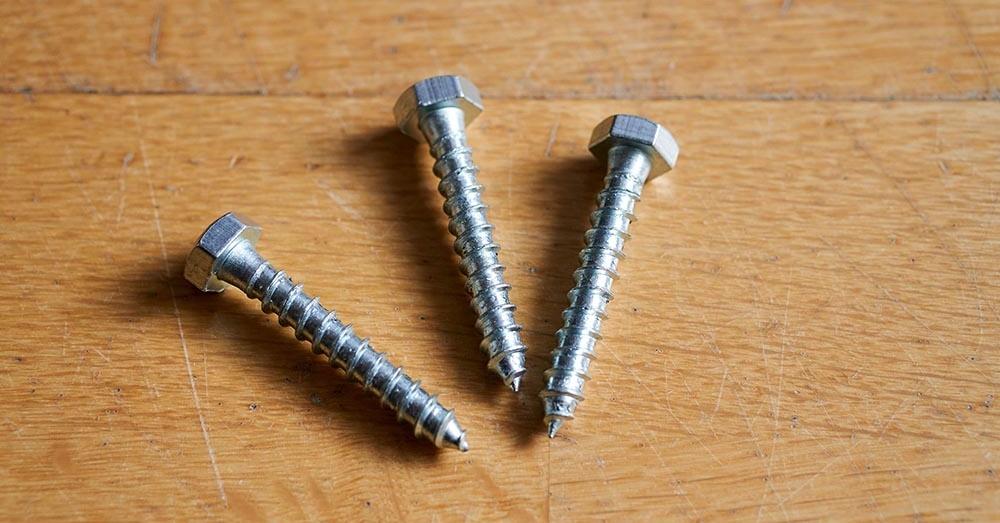Are you curious to know what is a lag screw? You have come to the right place as I am going to tell you everything about a lag screw in a very simple explanation. Without further discussion let’s begin to know what is a lag screw?
In the world of construction, woodworking, and DIY projects, fasteners play a critical role in ensuring the structural integrity and stability of various structures and installations. One such fastener is the lag screw, often referred to as a lag bolt. Lag screws are versatile and robust hardware components with a range of applications in both professional and DIY contexts. In this blog, we will explore what a lag screw is, its characteristics, common uses, and why it is a valuable addition to your toolkit.
What Is A Lag Screw?
A lag screw is a type of threaded fastener designed for heavy-duty applications. It features a cylindrical, partially threaded shaft with a pointed tip and a hexagonal head for easy installation using a wrench or socket. The unique design of a lag screw allows it to provide secure and long-lasting connections in various materials, including wood, metal, and masonry.
Key Characteristics Of Lag Screws
To better understand the versatility and utility of lag screws, let’s delve into their key characteristics:
- Size Variability: Lag screws come in various lengths and diameters, allowing users to choose the appropriate size for their specific application. This versatility makes them suitable for both light-duty and heavy-duty projects.
- Threading: The threaded portion of a lag screw extends partially along its shaft, typically about two-thirds of its length. This threading is designed to grip and hold materials securely.
- Hexagonal Head: Lag screws have a hexagonal head, also known as a hex head, which facilitates easy installation and removal using a wrench or socket. This design ensures a strong grip and minimizes the risk of stripping the head.
- Pointed Tip: The pointed tip of a lag screw helps it self-drill into wood and other materials, reducing the need for pre-drilling holes in many cases.
Common Uses Of Lag Screws
Lag screws find applications in a wide range of construction, woodworking, and DIY projects. Here are some common uses:
- Deck Construction: Lag screws are frequently used to secure deck framing, posts, and railing systems to the underlying structure. They provide robust connections that withstand the load and pressure experienced by outdoor decks.
- Woodworking: Lag screws are indispensable in woodworking for joining heavy beams, boards, and structural components. They are often used in timber framing, furniture making, and cabinetry.
- Home Improvement: Lag screws are employed in home improvement projects, such as installing shelves, hanging heavy mirrors or artwork, and securing wall-mounted TV brackets.
- Fencing: In fencing installations, lag screws are used to attach fence posts to the ground or to the horizontal rails, ensuring the fence remains sturdy and secure.
- Foundation and Concrete Work: In construction, lag screws can be used to anchor materials to concrete or masonry surfaces, making them useful for securing structural components like posts, beams, and brackets.
- Hanging Hardware: Lag screws are often used with eye bolts or hooks to create secure hanging points for items like porch swings, hammocks, and heavy light fixtures.
Conclusion
Lag screws are a reliable and versatile fastening solution for a wide range of applications. Their robust design, ease of installation, and exceptional holding power make them a valuable addition to any toolkit, whether you’re a professional builder, woodworker, or DIY enthusiast. When used correctly, lag screws provide strong and lasting connections, ensuring the safety and stability of your projects. The next time you embark on a construction or woodworking endeavor, consider the trusty lag screw for your fastening needs.
Visit Ofstype to Get to know about more concepts like this.
FAQ
What Is The Difference Between Lag Screws And Regular Screws?
Normal wood screws thread as they enter the wood, where lag screws require a hole to be drilled first. Lag screws also use a nut to add extra strength and security to help hold things together. Used for intense load applications, lag screws can support a much heavier load than the average sheet metal or wood screw.
What Defines A Lag Bolt?
Lag bolts, also called lag screws, are large wood screws with hexagonal heads that are perfect for projects like mounting your new flat screen TV in your house.
What Is A Lag Bone Screw?
The lag screw is the simplest means of rigid internal fixation. By virtue of its ability to compress bone fragments without the use of a bone plate, it has wide application and achieves great stability.
What Are Lag Screws Made Of?
Lag bolts or lag screws may be made out of steel, stainless steel, or silicon bronze, and can be hot-dip galvanized to accommodate any and all projects as needed. Mostly used in the construction field, lag bolts are also commonly used for a variety of projects in and out of the home.
I Have Covered All The Following Queries And Topics In The Above Article
What Is A Lag Screw In Surgery
What Is A Lag Screw Used For
What Is A Lag Screw For
What Is A Reception In Football Teams
What Is A Reception In Football Rules
What Is A Reception In Football Nfl
What Is A Reception In Soccer
What Does Reception Mean
What Is A Snap In Football
Total Receptions Meaning
Td Football
What Is A Lag Screw
What are lag screws?
Are lag screws and carriage bolts the same?
